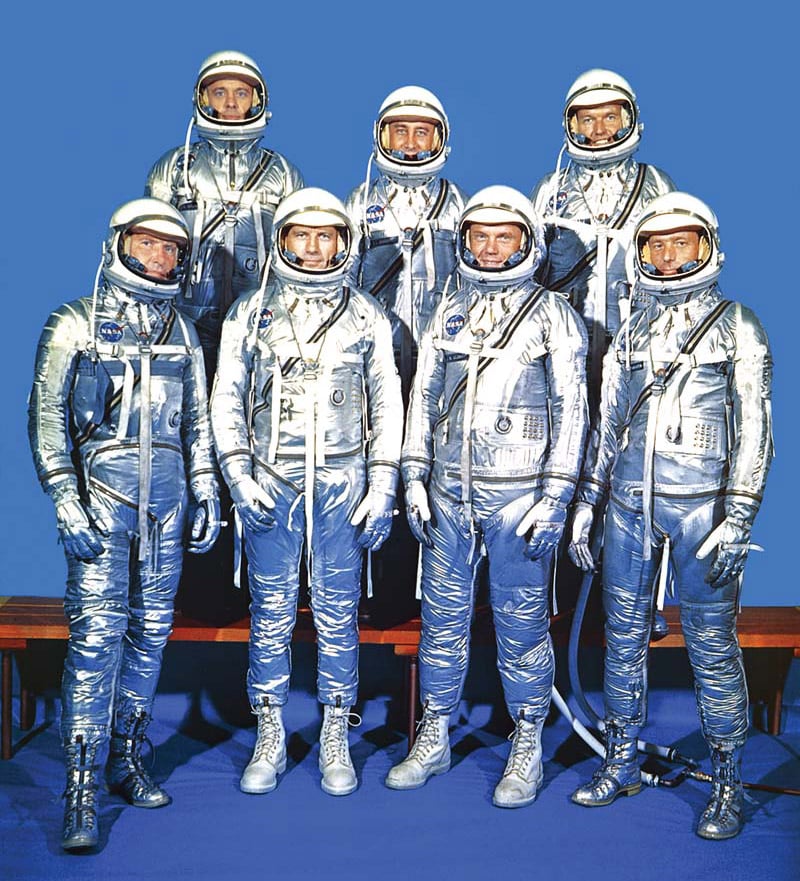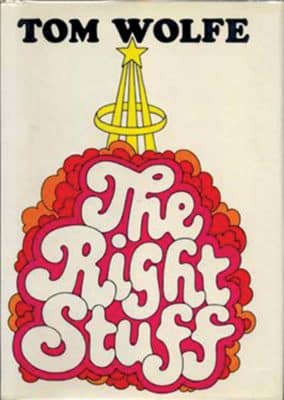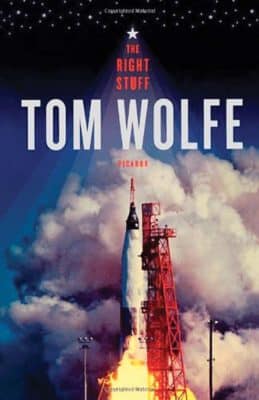Tom Wolfe hits his stride with Project Mercury masterpiece

Ezra Pound once claimed that you can judge a nation by its literature. That’s where it sinks or swims. A typically sweeping statement, but if so, America was doing pretty well during the 1970s: Novelists like John Updike, Saul Bellow, John Cheever, Norman Mailer, Bernard Malamud, Kurt Vonnegut, William Styron and Walker Percy, to name only a few, defined the contours of fiction. Poetry wasn’t quite as strong especially after the passing of America’s most natural poet, Robert Lowell, in 1977, but James Dickey, Richard Wilbur and the unjustly-forgotten A.M. Ammons could fill a lecture hall.
Among the greats of that bountiful decade was ever-popular Tom Wolfe. Who was that dandy in the white suit? Don’t people know how hot it gets in Richmond, VA, Wolfe’s hometown, during the summer months? In the 1960s, Wolfe began preaching the gospel of “New Journalism.” Literature must be about realism. Journalism, Wolfe maintained, was the only way to achieve that goal. In the “New Journalism,” the author often became as much a part of the story as the events he wrote about.
Wolfe would alter his views. By the mid-1980s, he launched an attack on literary fiction, decrying the existence of too many novels about the novelists and their anxieties—get out of the house and explore America. Wolfe still maintained his fidelity to realism, citing John Steinbeck and Edith Wharton as examples.
In his 1979 blockbuster, The Right Stuff, Wolfe did not inject himself into the narrative. But the writing was as lively as ever. After exploring forms of architecture and denouncing the “Me Decade,” Wolfe got off the sofa and celebrated the world of those original fly boys: The insanely heroic astronauts of the Mercury space program.
Wolfe had planned to write a history of the entire program, from Mercury to Gemini to Apollo to the return of the space shuttle. Once he was engrossed in the Mercury program, he found he had more than enough material for an entire book. All the elements of great drama were there: The long-suffering wives, the leadership of Chuck Yeager, the hell-for-leather jet pilot who broke the speed of sound, Alan Shepard’s solo shot into space and finally, the climax: John Glenn’s orbit of the earth. The story of the Mercury program was not an eventual rocket ship to the moon. No, it was a do-or-die (people believed the space race with the Russians was a version of the Cold War from the heavens). Once Glenn orbited the earth successfully three times, America had found the authentic salt-of-the-earth squeaky clean hero it badly needed.

The book is a comic masterpiece. Yes, these fly boys had to be a little crazy to sit on top of a lit candle and go rocketing into the dark. The drama is even greater. There was the courage of the astronauts and even more so, the fortitude of their wives on the ground. The Right Stuff ran to 367 pages. You won’t notice the bulk. Here is a book that can be read in one sitting. It’s that dramatic, that fast and that much fun. The early years of the program had its failures. One launch after another from Cape Canaveral ended in spectacular explosions. Those would-be flights were unmanned. When it was Shepard’s turn, not many people were optimistic.
[On] the morning of May 5, millions, stopped by the side of the road, paralyzed by drama. This was the greatest death-defying hell-driver stunt ever broadcast, a patriotic stunt bound up with the fate of the country. People were besides themselves.
It worked. Shepard made it. Fifteen minutes in space and back down into the Pacific Ocean. The real story was Glenn’s orbit. Here is where the space race would be won. The fly boys were fun boys. They became celebrities and they enjoyed it. Glenn, a Presbyterian lad from rural Ohio lived up to the clean-cut image NASA officials created for this rowdy bunch. He jogged every morning, he worked out constantly. Glenn was a good soldier who patiently waited his turn. And that patience was rewarded. The orbit wasn’t as easy as it looked. Hurtling earthbound, Glenn would have to put his faith in the heat shield—or was it something else? Every flight had those three minutes or so when the pilot lost contact with Mission Control. Readers will recall how agonizing that was. The astronaut speeds towards earth, the capsule’s shield fending off the blinding heat. Does he pull through? Reader, you know the answer.
The capsule hit water…Even with the suit fans still running, the heat was terrific. Over the radio, they kept telling him not to leave the capsule. The rescue ship was almost there…He wasn’t about to hit the hatch detonator. The Presbyterian pilot was not about to foul up. His pipeline to the dear Lord could not be clearer. He had done it.
That was just the beginning. For Glenn, the next stop was a visit to the White House and Capitol Hill. After that, a ticker tape parade in downtown Manhattan. First, Washington:
He [Glenn] knew just what he was doing….He said things that nobody else in the world could have gotten away with, even in 1962. ‘I still get a lump in my throat when I see the American flag passing by.’ But he pulled it off! And then he lifted his hand up toward the gallery…‘above all, I want you to meet my wife, Annie…Annie…the Rock!’ Well, that did it. That turned on the waterworks. Senators and representatives were trying to clap and reach for their handkerchiefs at the same time.
And then, the Big Apple.
Like most military people…they [the astronauts] didn’t really consider [New York] to be part of the United States…Whatever ideals the military stood for, New York City did not. It was a foreign city full of a curiously tiny malformed gray people.

Glenn landed at LaGuardia Airport. Traveling along the Long Island Expressway into the city was impossible, so the entourage took a shortcut, driving along Astoria Boulevard towards the Queensboro Bridge. That thoroughfare was packed, also.
What they saw bowled them over…People were crying, right out in the open, as soon as they laid eyes on John…They were swept up in the wave now…When they reached….Manhattan…there were more people hanging over the railings…and they were crying and waving little flags and pouring their hearts out.
Has there ever been a nonfiction work more American than The Right Stuff? The brave Shepard, the dutiful Glenn, plus Gordon Cooper, the good times hero. In the background was Yeager, the ultimate Wolfe hero: The taciturn mountain man, who was glad to break the speed of sound, but also a man who neither needed nor desired the celebrity that went with being a Mercury astronaut. Yeager was content to stay in the background, coaching and gently prodding his protégées. The man didn’t mind taking off in an Air Force jet every now and then for another bout with the sound barrier.
Wolfe once called his white suit a “form of passive aggression.” His work, fiction and nonfiction alike, also had an impish quality to it. Wolfe knew that by the 1960s, the ‘WASP’ (and he was a member of the tribe) was being resented and ridiculed by ethnic groups one and all. The man put a twist on things. WASP you say? Try Chuck Yeager. Try Junior Johnson. This extended to his novels: Sherman McCoy of The Bonfire of The Vanities, Charlie Crocker in A Man in Full and I Am Charlotte Simmons, a novel about the western North Carolina mountain girl of that same name who conquers an elite college campus. Authentic heroes and heroines all.
The Right Stuff is Wolfe’s best book. It’s a time capsule representing an Innocent America.





















